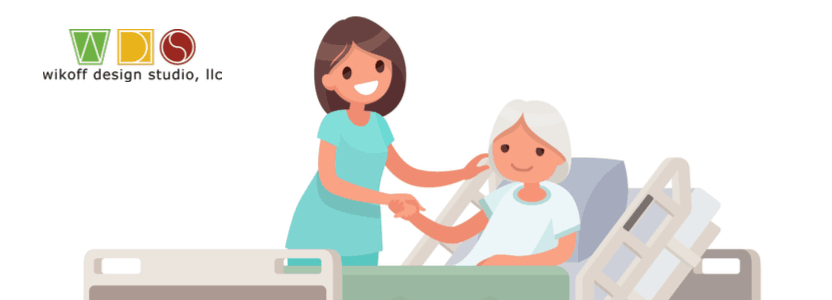Blog
Building Patient Satisfaction by Improving the Physical Environment

As noted in a recent report by the American Hospital Association (AHA) and its American Society for Healthcare Engineering (ASHE), improving the patient experience through the health care physical environment means a better outcome for all the stakeholders involved.
Caring staff, patient-centered operations and well-designed facilities work together to support an excellent patient experience, a significant metric for attracting and retaining patients, maximizing reimbursement and achieving better outcomes.
By providing environments in which people feel safe, comfortable and confident in the care they receive, hospitals and health systems can ensure a positive patient experience.
Patient Experience
Patient experience is based on three important and related factors:
- People
- Process
- Place
The Designer’s Goal
The healthcare designer’s goal is to take all factors into consideration and create an environment that appeals to the patients, their families, and the staff. In order to do so, the designer needs to address the aesthetics and the functionality of a space. Better known in the design world as form and function.
For example, a healthcare designer could do the following:
- Use color and materials to make the patient feel calm and welcome.
- Design the space that allows optimal functionality and easy transitions for the staff. For example, patient lift systems take the strain off the nurses and reduce the awkwardness a patient could feel when the nurses strain to lift them from bed to be.
- Procure all spaces with a purpose in mind. For example, decentralized nurses stations make it easier for nurses to watch over their patients. A healing garden is a space for patients and staff to go to decompress and feel relaxed. Each space designed needs to have a purpose that delivers satisfaction.
Case Study – Always Quiet at Night
A perfect example of how a hospital can address customer satisfaction issues and see an increase in the outcome is the Clevland Clinic. In a patient survey, they found that one of the biggest complaints was noise, especially at night when the patient was trying to sleep.
Cleveland Clinic began by measuring the decibel levels on several patient units. While the levels weren’t substantially different from those at similar hospitals, “there was more noise than there should be, so that’s what we wanted to work on,” explains Joe Strauss, AIA, ACHA, director of planning and design.
The organization’s approach to the issue involved facilities, operations, technology and equipment, Strauss says. This included opportunities to mitigate noise by installing sound-absorbing ceiling tile and quieter door latches, holding rounds in rooms instead of corridors, turning off TVs that aren’t in use, setting pagers to vibrate mode, lowering the unit telephone ring volume, and replacing casters and wheels on rolled equipment with quieter models.
Following the implementation of several initiatives, HCAHPS scores for “always quiet at night” have risen six percentage points in two of the four participating units. Kelly Hancock, DNP, R.N., NE-BC, executive chief nursing officer at the Cleveland Clinic, says, “Clinicians might check off all of the important clinical boxes when caring for a patient, but it’s often the small — perhaps, nearly imperceptible — nonclinical elements of a hospital stay that most affect whether a patient has a good experience.”
Strauss says Cleveland Clinic is working with an acoustic engineer in the design of new facility projects to determine the optimal layout and best materials for noise control on patient units.
If you would like to learn more about improving patient satisfaction through design, contact Marie Wikoff at Wikoff Design Studio.
Marie Wikoff, CHID, EDAC, LEED, RID  has over 20 years of experience in the field of Interior Design and specializes in healthcare design. Her designs are not only fresh but also appropriate for space and the people that they are designed for.
has over 20 years of experience in the field of Interior Design and specializes in healthcare design. Her designs are not only fresh but also appropriate for space and the people that they are designed for.
Professional Associations and Accreditations:
- Evidence-Based Design Accreditation and Certification (EDAC)
- American Academy of Healthcare Interior Designers (CHID)
- National Council of Interior Design Qualification (NCIDQ)
- Registered in the State of Nevada (RID)
- The California Council for Interior Design Certification (CID)
- USGBC LEED AP (LEED AP)
- American Institute of Architecture, Allied Professional (AIA Allied Professional)
Source:
AMY EAGLE. “Building patient satisfaction.” Health Facilities Managment, 1 Aug. 2016,
https://www.hfmmagazine.com/articles/2314-building-patient-satisfaction.







